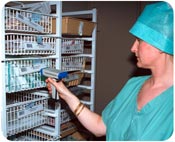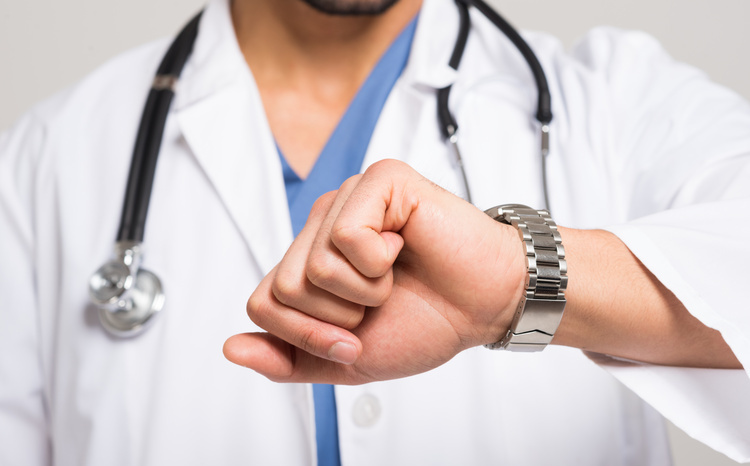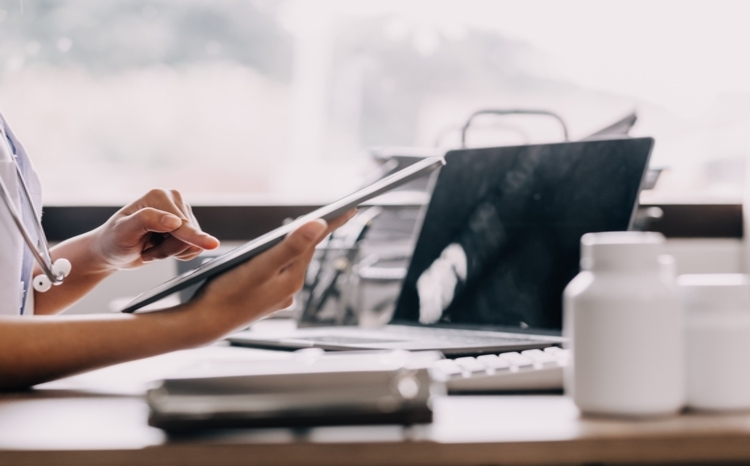Eighty trusts sign up to ‘scan and save’
- 24 January 2008
 |
Radio Frequency Identification and barcode standards specialist GS1 UK says that almost eighty NHS trusts across England have signed up for to its ‘scan and save’ initiative for automatically tracking and tracing sterile surgical instruments.
The wireless wristband and barcode-based technologies allows hospitals to trace the complete life cycle of surgical instruments, including the verification of the decontamination and sterilisation process, and determine in which operation the instruments were used.
The momentum follows successful pilots at five North-west trusts who have been using the GS1 asset tracking technology since June 2006.
GS1 has been working with the Department of Health on the initiative since last February, when it published the report ‘Coding for Success: simple technology for safer patient care’ advocating the use of smart wireless wristbands and barcode labelling technologies.
GS1’s healthcare manager, Roger Lamb, told E-Health Insider: “Sterile surgical instrument tracking programme is the first pilot project driving take up of GS1 membership. As we work more closely with the NHS and momentum for the ‘scan and save’ initiative builds we expect to see a growth in such pilots covering pharmacy manufacturing, patient identification and surgical instrument tracking.”
Developed in association with the NHS Purchasing and Supply Agency, the barcode system will enable automatic identification by barcoding of all sterile surgical instruments in the hospital. Using the system, instruments are scanned before and after use in theatre to track them.
GS1’s chief executive, Gary Lynch, said: “Saving lives and money are two benefits which the NHS quite literally cannot afford to ignore. It is encouraging to see this level of interest so early on in the initiative, and we look forward to providing support to the hospitals involved to ensure they reap the full rewards. We urge hospitals across the UK to sign up to the ‘scan and save’ initiative and improve patient safety.”
The DH believes that AIDC (auto-identification) technology has the potential to tackle mismatching errors in particular, as well as bringing other efficiencies and cost savings – at present errors, many of which are caused by getting the patient identity wrong, are estimated to cost the NHS as much as £2 billion in extra bed days. Auto-identification has the potential to reduce this could make a significant impact on this cost.
Former health minister, Lord Hunt, said of the technology: “Auto-identification is not a new technology – we’ve all been used to bar codes in supermarkets for years. But to reap the benefits in healthcare everyone needs to work to agreed standards. We are recommending that both industry and the NHS should use the GS1 System for coding, and I am delighted to be able to announce that GS1UK will be providing membership and support to NHS organisations who want to move forward on this.”
The Department of Health are recommending that the GS1 system should be adopted throughout the healthcare system in England, both for manufactured products and for coding systems used within healthcare settings, such as patient identification codes on wristbands. They will review progress by the end of 2008.
Connecting for Health is working with GS1 UK to engage and inform hospitals on the importance of using automatic identification and the GS1 system of standards.
It is estimated that the NHS has at least 9m individual surgical trays in circulation containing tens of millions of surgical instruments. It has been estimated that lost instruments can cost a 500-bed hospital over £100,000 per year
“The NHS CfH is providing NHS hospitals in England an opportunity to join GS1 UK by centrally funding their membership so that they can start coding their application areas using the globally unique GS1 standards to improve patient safety and to keep in line with the government’s ‘Coding for Success’ policy,” says Neil Lawrence, NHS CfH Auto-ID project manager.
Wayne Spencer, an advisor to the National Decontamination Programme, added: “Hospitals cannot afford to ignore the issue of traceability or how we manage our most valuable assets. There is a need for all instruments to be properly coded in order to make tracking and traceability a reality and to help eradicate any errors that could put patient’s lives at risk. I welcome the support that GS1 UK is giving to hospitals to enable them to improve their efficiency and to give patients the best possible care.”
Links




